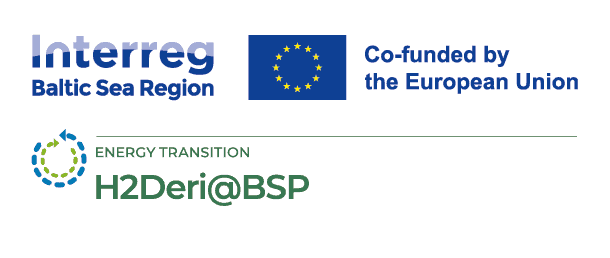
H2-Derivatives port regulatory framework
08 May 2025
The port regulatory framework is expected to be the backbone of planning and investment activities, but also safe operation of H2-Derivatives handling, storing and bunkering procedures. It will allow public regulatory authorities to assess the situation and, later, to initiate regulatory processes in their jurisdictions to remedy gaps, e.g., regarding financial instruments or permitting processes to promote the port as a green energy hub. Suppliers and end-users will be equipped with an in-depth but easy to use manual on what is required of each stakeholder, both in terms of preparing for supplier of these fuels, but also during the supply of fuel.
The improved port regulatory framework would function as a blueprint for all port authorities in the Baltic Sea Region (BSR) and beyond, who wants to step into green H2-Derivative energy supply. It is a recommendation for the legal and institutional departments what regulations are needed and to what extent the current regulations have to be adapted, and tailor made to the new energy carrier. It will facilitate the plans and investments for investors, operators, and shipping lines, which wants to use the port for the supply of green energy supply. The framework will also enhance consideration in future discussions and legislation processes by providing blue-prints for successful alternative fuel supply infrastructure planning which considers the interdependence of infrastructure planning processes of port authorities and national transport-/ spatial planning authorities. The key regulatory requirements for H2-Derivatives handling in port would include aspects like:
- Overview of port regulatory and safety requirements in EU ports
- Identification of accomplished examples in the ports within the project partnership
- Identify both gaps and best practices in respect of H2-Derivatives activities
- Recommendations on comprehensive port regulatory framework
The Port Safety Handing Manual is expected to summarize the results of best handling procedures of green energy for bunkering in ports, both ship-to-ship and truck-to-ship supply. It shall contain the findings, comments and recommendations from project partners, associated organisations, and other representatives from the target groups. It will help “new” green energy ports to develop own regulations faster and in a qualified way and will enable safer bunkering of green H2-Derivatives in the BSR possible. The safety requirements for H2-Derivative handling would include the following key aspects:
- Best practices and findings of current safety requirements in EU
- Checklist of conditions/requirements to handle green fuels
- Standard general procedures for smooth and safe operations of green fuels
- Recommendations to support capacity building at relevant public and port authorities
Transnationality of the developed solutions would be ensured by considering the regulatory situation at all partner nations in the BSR.
Regular updates will be shared here as the project evolves and produces outcomes. Should you require any further information in the meantime, please contact the lead partner or the communications manager.
Interactive map showing pilot locations. Use the arrow keys to move the map view and the zoom controls to zoom in or out. Press the Tab key to navigate between markers. Press Enter or click a marker to view pilot project details.





